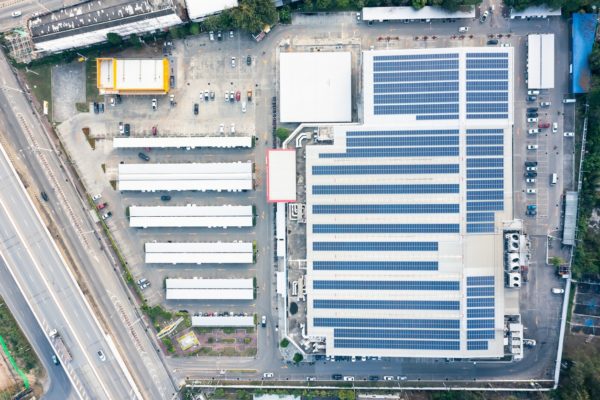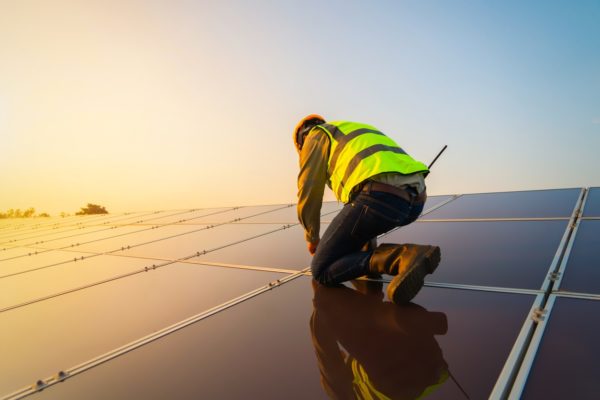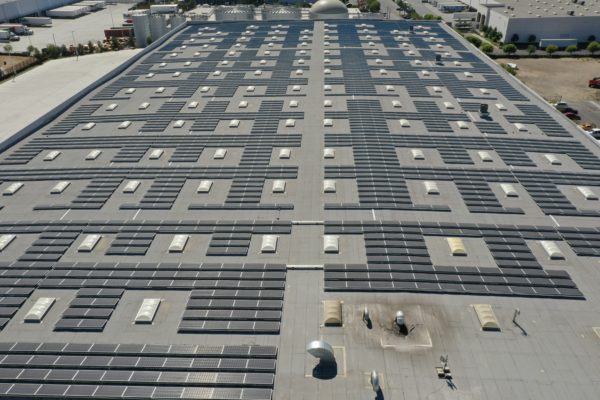
A commercial solar energy system is valuable for small, medium, and large enterprises. Not only does it help significantly reduce energy bills, but it also decreases owed taxes and adds to the property value. However, the first step to accomplishing these objectives is selecting the right commercial solar financing option. After all, deciding how to pay for a project of massive size is a fundamental first step to getting it off the ground.
Why is a Commercial Solar Energy System a Good Investment?

Solar projects offer various operational, financial, and environmental benefits for businesses of all types and sizes.
Tax Benefits
Companies can claim around 26% of solar project expenses against federal income taxes with the help of the federal solar investment tax credit (ITC). Unlike tax shelters, commercial solar energy projects have a low operational risk for owners. The ITC has been very important in the adoption of solar energy by commercial businesses over the past decade and is a well-mandated and straightforward way of decreasing taxable income.
Operational Benefits
Investing in solar projects goes well beyond tax benefits. By installing a solar energy system, commercial entities can continue enjoying predictable electricity rates for many years, resulting in drastic operational savings. Solar energy can also enhance reliability to avoid more frequent power cuts and minimize downtime when combined with battery storage. Moreover, solar can hike up property value without changing the building structure.
ESG Goals
Going solar can help businesses meet environmental, social, and governance (ESG) goals. As an easily quantifiable, tangible, and green energy asset, solar power is a highly effective way of helping companies meet their sustainability targets. Additionally, most solar-powered systems are relatively easy to implement and do not require drastic changes to everyday business operations.
Commercial Solar Financing Tips

When it comes to commercial solar financing, numerous options come with their advantages and disadvantages. Whichever commercial solar financing option you choose, adding solar is one of the few investments that put money back into the business’s bottom line from the minute it’s turned on.
Cash
Most companies purchase a commercial solar system outright with cash. This option is ideal for those organizations looking to take advantage of federal and state solar incentives and rising depreciation. The rate for 2023 is expected to drop to 26% (from 30% in 2022) and then remain stagnant at 22% for commercial solar projects in 2024. So, if you are looking for significant returns on your investment, now is the right time to take action.
Even though there are not many cons of purchasing with cash, perhaps the biggest disadvantage would be the access to large sums of capital. Not every business has the ability to pay the required money upfront and in one go, but there is a possibility of combining cash with a lease or loan to maximize the ROI on your investment.
Loans
With a good credit score, companies have the option to finance their commercial solar projects through loans. Low-interest loans with a present banking relationship usually offer the quickest and most lucrative ROI outside of a cash purchase. The rule of thumb is to use loans to finance only part of the net cost after subtracting the incentives. A solar energy installation specialist can help answer your questions and help you decide the right commercial solar financing options depending on your organization’s specific situation.
There are various kinds of loans available for financing solar power projects. These include:
- Secured loans. These loans are typically used for purchases that require huge sums of money, making them ideal for financing a solar project. Lenders generally prefer secured loans since less risk is involved, which benefits the borrowers through lower interest rates. With an exceptional credit score, companies can benefit from rates as low as 3% to 5%. Collateral is generally taken if the borrower defaults on the loan, and this failure can damage the credit score.
- Unsecured loans. This type of loan does not require collateral, but failure to pay can severely impact the credit score. The debt can also be sent to a collection agency if the amount is not paid within the lender’s terms.
A big drawback of acquiring loans for commercial solar projects is an excellent credit score requirement. This may not be a big deal for larger and well-established companies, but for medium to small-sized enterprises, it can be a challenge. A solar loan makes the most sense if you have remaining net savings after deducting debt payments, maintenance costs, and insurance.
PPAs
Also referred to as Solar Service Agreements, Power Purchase Agreements (PPAs) are another effective option for funding your solar project. Under the commercial solar PPA terms, the solar customer agrees to buy the solar energy from the system owner at a specific price over a pre-determined number of years. The typical length of a PPA term ranges from 10 -15 years. A zero-down PPA is where you pay no upfront payments and can be an ideal option if you are short on startup capital.
A commercial solar PPA has historically remained one of the main ways of financing commercial solar projects due to its ease. This option is best suited for nonprofits and other organizations like charities, schools, and churches that cannot support upfront expenses or utilize tax benefits, such as the Solar ITC.
Lease-to-own
Commercial solar leases are agreements where a third-party lease the project to a developer and makes payments on the power produced. The customer makes monthly payments for the power at a fixed rate independent of the system’s output. A leasing agreement avoids upfront cash payments owing to the funding of the third-party financier and prevents the energy costs from rising based on the PV’s energy production. Payments are generally made monthly, and the lease term can differ from one case to the next. Towards the end of the lease, the company usually has the option to bargain a buyout. A lease-to-own buyout generally comes with a lower cost than a PPA buyout, which is an additional benefit of choosing this financing option.
However, the biggest drawback of leasing a commercial solar project is that you cannot directly benefit from taxes and depreciation incentives, which drastically help reduce the expense of such solar energy systems and quicken the return on such a type of investment.
C-PACE
Another resourceful option available to commercial organizations is the Commercial Property Assessed Clean Energy (C-PACE) program. Available in 36 states, this financing method benefits developers and building owners who do energy maintenance upgrades to their properties.
C-PACE allows for building upgrades to be funded with little down payment and covers the entire useful life of the solar project. It is a comparatively affordable option that enables commercial property owners to finance upgrades that promote energy efficiency, preserve water, produce renewable energy, and provide protection against storms.
The quality that sets C-PACE apart from other options is that this type of funding is paid back through a tax examination of the property. Once the solar project has been completed, and the property value has been appreciated, the owner’s payments will be then based on a tax assessment of the property. This means that the solar projects can benefit from long-term funding, for example, 20 to 30 years, and C-PACE tax assessment can still take place even if the owners of the property change.
Partnership Flips
A partnership flip is a type of Tax Equity Financing that covers approximately 35% of the solar system’s cost. With a partnership flip, tax equity investors are involved as partners and own a renewable energy project together with the solar company. In such a case, the tax equity investor owns 99% of the project until their internal return rate is met. After that, most of the ownership is transferred to the solar developer.
The Impact of Transaction Costs on Commercial Solar Financing Options

Solar energy financing involves several parties with varying goals and interests in a project. Bargaining legal terms that are favored by all can be a tedious and costly endeavor. Due to the involvement of multiple parties, transaction costs for securing this kind of finance increases significantly.
Due to these high transaction costs, these deals make more sense for larger projects that exceed a certain value threshold. Besides the commercial sector, these forms of financial structures are popular on a utility-scale but are unfeasible for many smaller projects.
Consult with Coldwell Solar on Financing Options
As is evident, commercial solar financing can be quite complex and overwhelming. Depending on your company’s role in C&I solar projects, you do not need to be an expert to figure these finance structures out. However, it is critical to understand the myriad of available options, pros and cons, and their implications.
If you want the financing option that will best suit your company, its aims, and goals, then get in touch with Coldwell Solar for more information. Our team of highly-skilled experts brings unparalleled power system engineering and project management experience from the solar, energy management, and construction industries. We will help you with the installation and guide you regarding the different available options.

